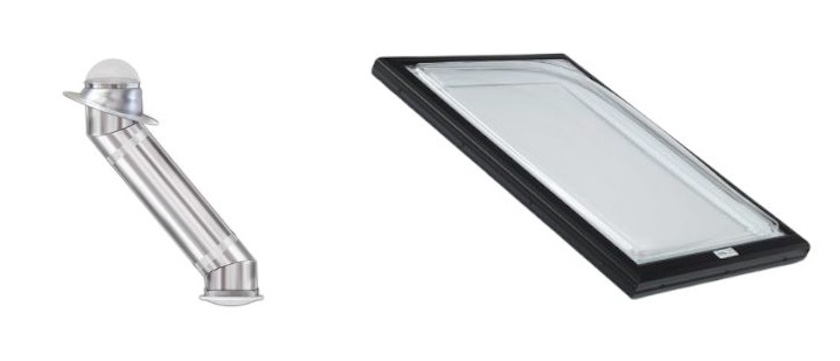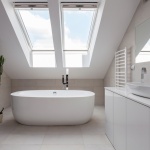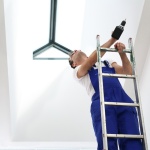
How to choose the right natural lighting solution for your building
To install a solar tunnel or a skylight – that is the question, when debating the best way to bring natural lighting into your building interiors via the roof.
While they might be interchangeable in some areas, each of these popular daylighting systems can outshine the other under specific circumstances.
Let’s compare the ease of installation, aesthetic impact and controllability of skylights and solar tunnels, to help you determine which is the optimal choice for your building.
Ease of installation
If you’re looking for a quick lighting fix, solar tunnels are the way to go.
Compared to skylights, solar tunnels have a smaller roof footprint, a lighter structural load and a lower risk of faulty thermal bridging or air leakage. Their compact design allows them to bypass HVAC ductwork and beams, making them a great fit for retrofits. Because they require few structural modifications to install, solar tunnels also tend to be a more affordable option.
On the other hand, skylights typically require substantial structural modifications to be used in a renovation. This can range from roof framing adjustments to flashing integration and potential alterations to your building’s drywall or ceiling system. All told, this can increase project budgets and timelines, particularly in retrofit applications.
Solar tunnels win round one, but don’t count skylights out just yet.
Control over light and air
When it comes to control over lighting and ventilation, skylights take the cake.
This is because they come in a wider variety of sizes, shapes and glazing options. They can include integrated blinds or shades, which provide precise control over light intensity. Additionally, you can opt for operable skylights that allow for natural ventilation, bringing fresh air indoors.
Alternatively, solar tunnels are tubular lighting systems designed to transport sunlight from a roof into an interior environment. Like tanning mirrors, they use reflective surfaces to concentrate the power of the sun into a diffusing ceiling lens that spreads light uniformly throughout a space. They are sealed and do not offer ventilation.
Each daylight system dominates depending on your specific needs, so we’ll call this round a draw.
Aesthetic and architectural features
There’s no question about it – when it comes to aesthetics, skylights bring the drama.
Like vertical counterparts – i.e. windows – skylights provide visual access to the atmosphere, adding ambiance to interiors. As noted above, skylights come in a wide range of dimensions and configurations, making them ideal for both single-family residences and commercial gathering spaces with large open areas.
Solar tunnels may not provide views; however, they are highly effective at delivering energy-efficient lighting in tight or enclosed areas.
With their potential for architectural enhancement, this bout goes to skylights.
Solar tunnels or skylights: Equal contenders
When debating whether to invest in skylight systems or solar tunnels, your decision should be based on your budget capacity for structural modifications, the functions you need your systems to perform, and your goals for comfort and aesthetics.
In some cases, using a combination of both skylights and solar tunnels throughout a building can provide a balanced and cost-effective daylighting strategy. Consulting with a building performance expert or daylighting specialist can help you choose the best solution for your building’s layout and usage needs.
Whether you’re designing a new building or retrofitting an existing one, bringing more natural light into your space is always a bright idea.



